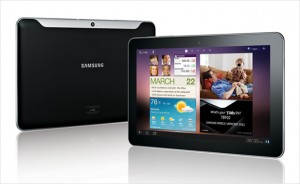By
Rob ScottApril 25, 2014
Instagram has redesigned its “Explore” tab to provide a more relevant experience for users, rather than showcase random pictures that receive a lot of global Likes. The Explore tab will now display the photos and videos “Liked” by individuals that a user is actively following. This personalization reflects Instagram’s focus on each user’s social graph, which contrasts with the approach by Vine that largely centers on re-sharing content and notable video creators. Continue reading Instagram Improves Explore Tab for Personalized Experience
By
Rob ScottDecember 16, 2013
Twitter is testing a new timeline for its mobile app based on location, called “Nearby,” which shows users recent tweets that originated in the user’s vicinity. The Nearby feature has occasionally appeared on the smartphones of users who allow the service to use their location (users can also opt out of location sharing). Twitter has yet to comment on the feature, which some suggest could be attractive to advertisers, but says it experiments regularly to provide a better user experience. Continue reading Twitter Runs Location Sharing Experiment with Nearby Feature
By
Rob ScottAugust 23, 2013
Google introduced this week the first integrations between its Google Maps for Mobile and the newly acquired Waze traffic app (Google purchased Waze for $1 billion in June). Obstacles such as construction, accidents and road closures reported by Waze users will now be available via the traffic tab on the iOS and Android versions of Google Maps. The Waze app will support Google search, while its map editors will have access to Google’s satellite imagery and Street View. Continue reading Google and Waze Integrate Their Mobile Maps for First Time

By
Rob ScottMarch 29, 2011
Engadget reports that Samsung Semiconductor has revealed plans to drastically increase the pixel density of the company’s tablets. Samsung projects that it will have tablet PC displays with 300 to 400 pixel-per-inch (ppi) resolutions as early as 2015.
Samsung’s current Galaxy Tab has a seven-inch, 1024 x 600 panel (about 170ppi), but the company suggests that similarly sized tablets may go beyond 1080p as pixel density increases (while still maintaining 8-10 hours of battery life). Samsung also said it would consider a glasses-free tablet display, based on consumer adoption of stereoscopic 3D.
The iPad 2 was originally expected to come with a Retina Display like the iPhone 4 screen from LG, but it didn’t happen. Rumors have already begun circulating about a Retina Display for the iPad 3 if the cost remains competitive.
As tablets go well beyond 1080p resolution, what will that mean for content producers?
